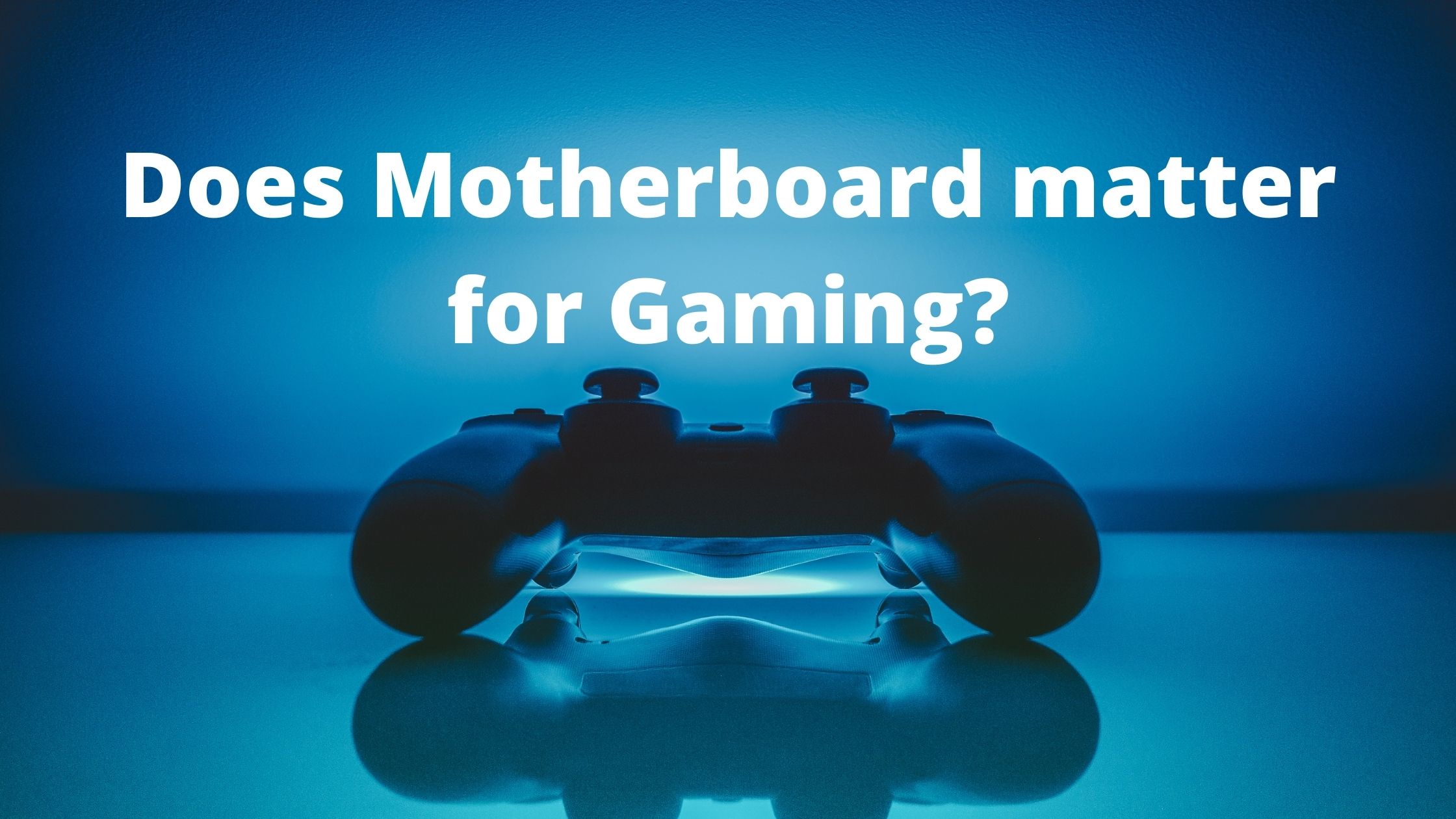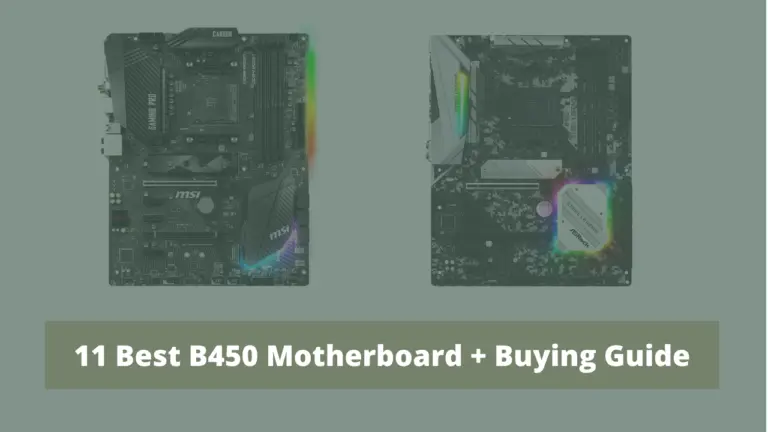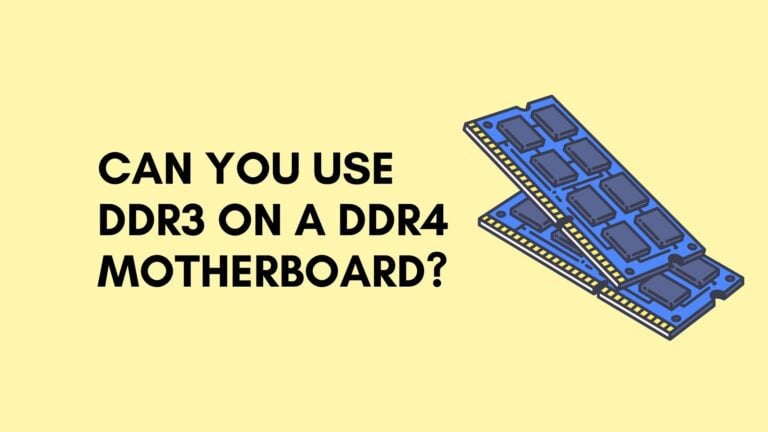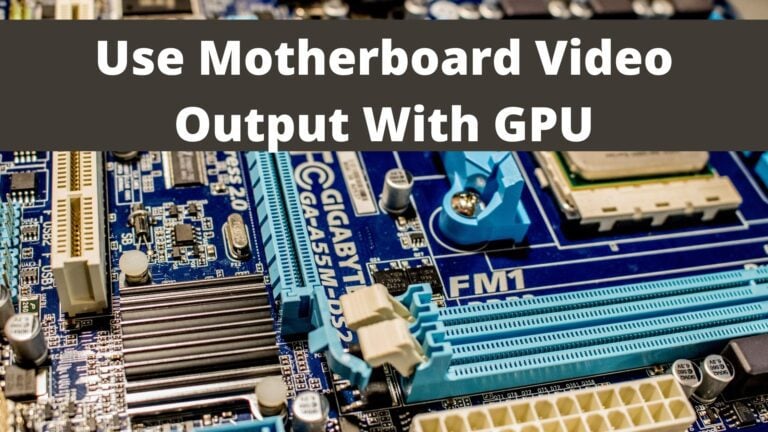Does Motherboard matter for Gaming?

If you’re someone who is planning on building a gaming PC, then you have probably thought about whether the motherboard plays an important role in the overall performance of your build or not.
Don’t worry, because, in this article, we’ll be discussing it in great detail. Hopefully, by the end of it, you’ll be able to draw your own opinion on whether you should buy that premium motherboard for gaming or instead invest in some other component.
The Importance of your motherboard in gaming
A motherboard is also regarded as one of the most valuable components in gaming. You may not require a nice motherboard because your preferences will have little influence on your gaming experience. However, your choice may have an impact on your whole computing experience.
This component connects with every other part connected to the motherboard. As a result, a motherboard and chipset specify the sort of graphic card and CPUs your PC will run, as well as the features it will have. This means that if you have a good one, it will be compatible with powerful GPUs and CPUs.
It will also offer more features. Also, keep in mind that a motherboard has no direct impact on performance. It can improve the graphics card’s performance, CPU, and other components. This will increase the Frames Per Second (FPS).
Consider a motherboard that is compatible with your graphics cards and processor. If you don’t want additional features such as additional GPU and RAM slots, for example, a good one will suffice. However, you won’t need a superb one for gaming too often.
Some of the crucial features influenced by your motherboard selection are the items you can install, the expandability, and the overclocking capabilities.
Check How to Know if Your Motherboard will Fit in a Case?
The simple answer is no; the motherboard shouldn’t matter much for gaming assuming everything works well. This indicates that the board can safely push the CPU to its maximum power and clock boundaries.
It also means that the board can run the RAM at its specified XMP rates. If these two prerequisites are satisfied, multiple motherboards with the same CPU and RAM perform equally well in games, even if they are based on different chipsets.
Effect of a better motherboard on FPS:
A better motherboard will likely not boost FPS (Frames Per Second). As a consequence, changing a motherboard does not affect FPS. However, changing the central processing unit will affect the FPS unless the new board has a different RAM speed.
While a motherboard does not directly affect FPS, it does so indirectly. A motherboard connects all of the components of a computer. Furthermore, all data communication activities between your computer’s components are handled by a motherboard. As a result, every time the same part is exchanged, you will notice a significant change in FPS. And it ranges from a high-quality to a low-quality motherboard.
The GPU and CPU are the two key components connected to a motherboard. Furthermore, the FPS is based on these two components in most circumstances. The GPU is primarily responsible for display. As a result, if it is not direct, the motherboard will have a far greater indirect impact on the FPS.
The central processor unit is the brain of the computer. It directs the actions that take place on the computer. It also does all mathematical computations. The GPU and CPU interact via the board to expose the visuals on display. And if the motherboard isn’t up to the task, communication between the two faces will be erratic. It will also affect the FPS.
Check Can You Use DDR3 on a DDR4 Motherboard?
A high-performance CPU may thus improve the FPS, whereas a low-performance processor provides inadequate FPS. Furthermore, direct CPU overclocking affects FPS and your gaming experience. The motherboard will frequently determine how far the CPU may be overclocked while remaining resilient.
A Graphics Processing Unit is also a specialized component. It assists the CPU by performing mathematical calculations while the processor performs other tasks. It’s worth noting that the GPU is vital when it comes to Frames Per Second, much like a processor.
You should also be aware that not every game is supported by the overclocking processor when you overclock your central processing unit. However, you will notice an improvement in the performance of your PC.
How much should you invest in a motherboard?
Some boards are less expensive and have enough power to run a game on the highest graphical settings. Nonetheless, a CPU may be overclocked on a limited scale. And this is true even if a highly pricey model allows you to maximize the CPU’s capabilities.
Because the CPU runs fast, overclocking can provide a significant boost in performance. You may also increase the voltage on the board, which will cause a CPU to create a lot of heat. A good motherboard features a good heatsink on its voltage regulator module, allowing proper heat dissipation and overclocking.
Most motherboards give relatively little variation in gaming performance; thus, spending a couple of hundred dollars on your next board for an extra 4FPS may not always be justified.
Higher-end-looking motherboards with all the fancy LED lights will always be more expensive owing to those features, but they are frequently only matched with high-performance motherboards so that you could be in luck there. The feature set will surely raise the price of a motherboard.
A motherboard with three USB 3.0 ports, for example, will cost more than one with three USB 2.0 ports. A lower-end overclockable motherboard from AMD should cost roughly $75-$90 depending on whether you pick for the B350 or B450, while Intel’s Z370 and Z390 boards cost a bit more than $100USD for the lowest end variants.
We recommend opting for a mid-range motherboard supporting the processor and GPU. The price of a motherboard is determined by its appearance and feature set; more expensive motherboards are only visually better.
A premium motherboard, for example, will be outfitted with flashy LED lighting that will add a lovely touch to your gaming machine. A motherboard with three USB 3.0 ports will also be more costly than one with three USB 2.0 ports.
Check Do Motherboards Come with Bluetooth?
What makes a motherboard good for gaming?
A motherboard is a printed circuit board that allows PC components to connect. A motherboard comprises several circuits, capacitors, transistors, connections, heat sinks, and slots.

To have the greatest gaming motherboard, you must focus on the qualities that it includes. These qualities can be beneficial in terms of gameplay. It is critical to consider compatibility considerations such as M.2 slots and RAM speed.
The following are the characteristics that make a motherboard suitable for gaming:
1) Overclocking:
If your motherboard can be overclocked, go ahead and do it. Overclocking improves overall performance as well as the price of the motherboard. You may boost the CPU’s total clock speed, which leads to increased productivity and gaming performance.
The motherboard chipset will allow you to push your CPU to its utmost. As a result, you must select the correct chipset for the correct CPU. Pay attention to the voltage regulator module to see if your motherboard allows overclocking (VRM).
The VRM receives power from the PSU and exclusively serves as a power source for the CPU. The VRM can overclock better if it has more power phases.
2) CPU Compatibility:
When selecting a gaming motherboard, you should also consider the processor. The essential thing to do is to discover a CPU socket compatible with your CPU and then get the finest chipset for your CPU. So, if you’re looking for a nice motherboard for gaming, check sure it’s compatible with the CPU.
3) RAM support:
Another critical step is to ensure that the motherboard receives the required RAM. Most games in 2019 work well with 32 GB of RAM, so if your motherboard supports 32 GB of RAM, that is plenty. Some motherboards support 64 GB of RAM, which is more than plenty for superb gaming performance.
4) M.2 and Expansion Card Support:
M.2 slots are for gaming enthusiasts who want to install an M.2 drive. These drives are speedier than HDDs and SSDs and can store important data. The M.2 slots are intended to increase booting and loading performance.
A motherboard should include at least one PC and PCle slot used for GPUs, sound cards, and network cards. For optimal gaming performance, ensure that the motherboard has enough slots to accommodate any other expansion cards required.
In summary, examine a motherboard’s expansion card compatibility for various cards.
Check Does Any RAM Work With Any Motherboard?
5) Longevity:
Your motherboard’s durability is critical to maintaining your PC in great operating order for as long as possible, or at least until you upgrade. Make sure your board has enough warranty time and keep note of when your warranty expires. Motherboards aren’t usually the first component to fail in a rig, but that doesn’t mean it isn’t a possibility, so always be prepared.
6) GPU Support:
Another critical computer component is the graphics processing unit (GPU). It is critical in the creation of high-quality video and images. As a result, a powerful GPU is also required for seamless gameplay.
You will not do well in gaming if you do not have it. It also gives excellent performance during picture or video editing. Every motherboard has a dedicated GPU connection connector. A graphic card can be attached to the motherboard through a 16-pin slot.
What to look for in motherboard for gaming:
As previously said, one you should always look for in a new motherboard is its ability to overclock, as this procedure offers your CPU a significant turbo increase in performance.
Chipsets frequently overclock at various levels. B450 motherboards typically outperform their B350 counterparts in terms of overclocking. And because the X370/470 motherboards are designed for overclocking, they will automatically outperform the B350 and B450.
When selecting an AMD motherboard, keep in mind that the chipsets will not always be out-of-the-box compatible with every CPU combination. Each chipset was designed for the processor generation with which it was introduced. While you can theoretically put any Ryzen CPU in any AM4 motherboard, there are certain gaps to fill.
Mentioned, Ryzen Gen 1 CPUs (1200, 1600, 1700) may operate in any AM4 motherboard right away.
The new 3000 series chips follow the same pattern as the 2000s, except that they are only out-of-the-box compatible with X570 boards. When it comes to Z370 and Z390 motherboards, there is absolutely no difference in overclocking potential between the two.
Conclusion
That’s all there is to it. If you choose a motherboard that can keep up with your CPU and RAM, you won’t notice any performance dips. In other words, if a motherboard is good enough to operate your CPU and RAM at their official specs and without power constraints, then it doesn’t matter for gaming.
Even if a motherboard isn’t necessary for gaming, you might select one that suits all of your needs. It is ideal for you if it supports the gaming performance you want. Also, it is within your budget.
Whatever your budget or requirements are, the market has a great motherboard for your gaming demands. As far as your motherboard is concerned, it is adequate for the gaming performance you require.
However, if you notice that your game lags or that your performance isn’t up to par, it’s time to upgrade to a motherboard that includes the aforementioned characteristics.






